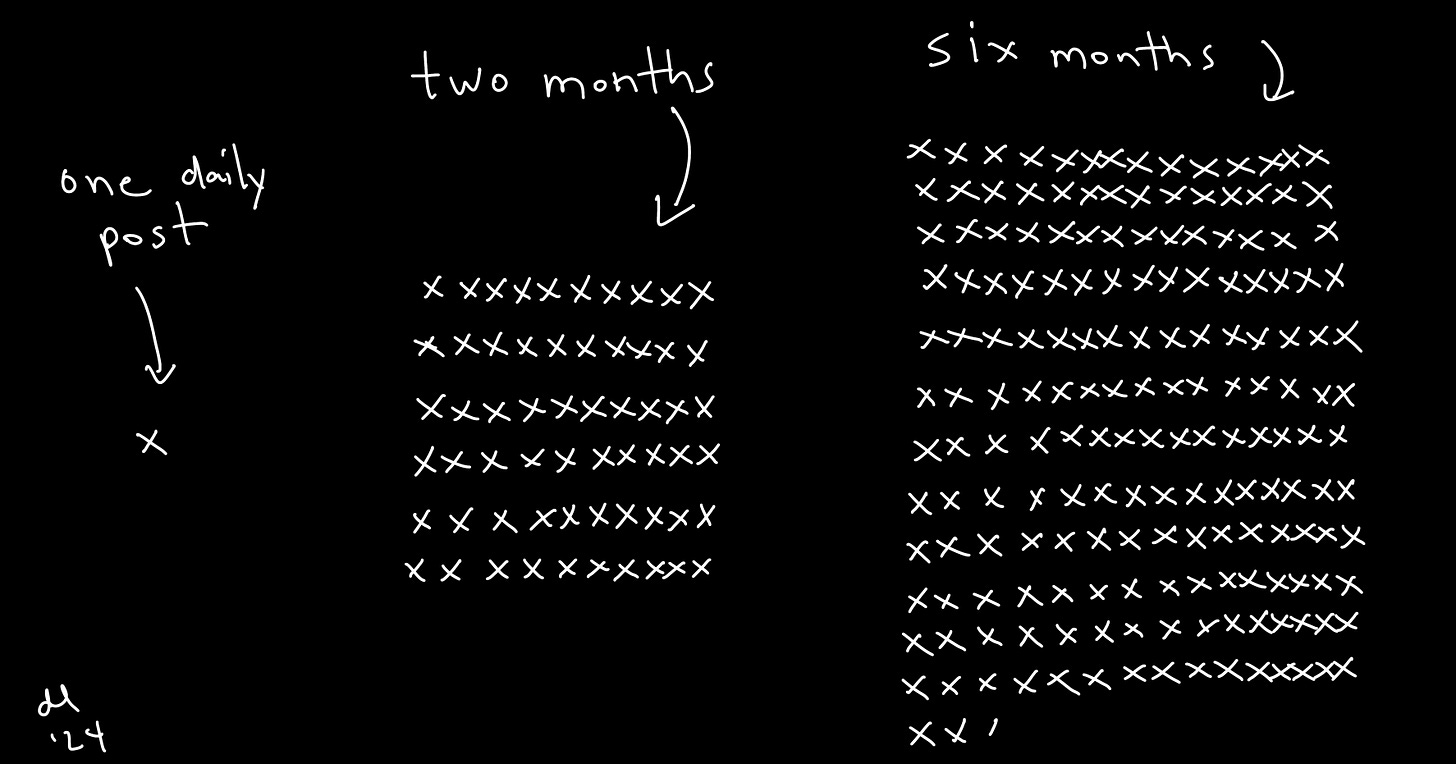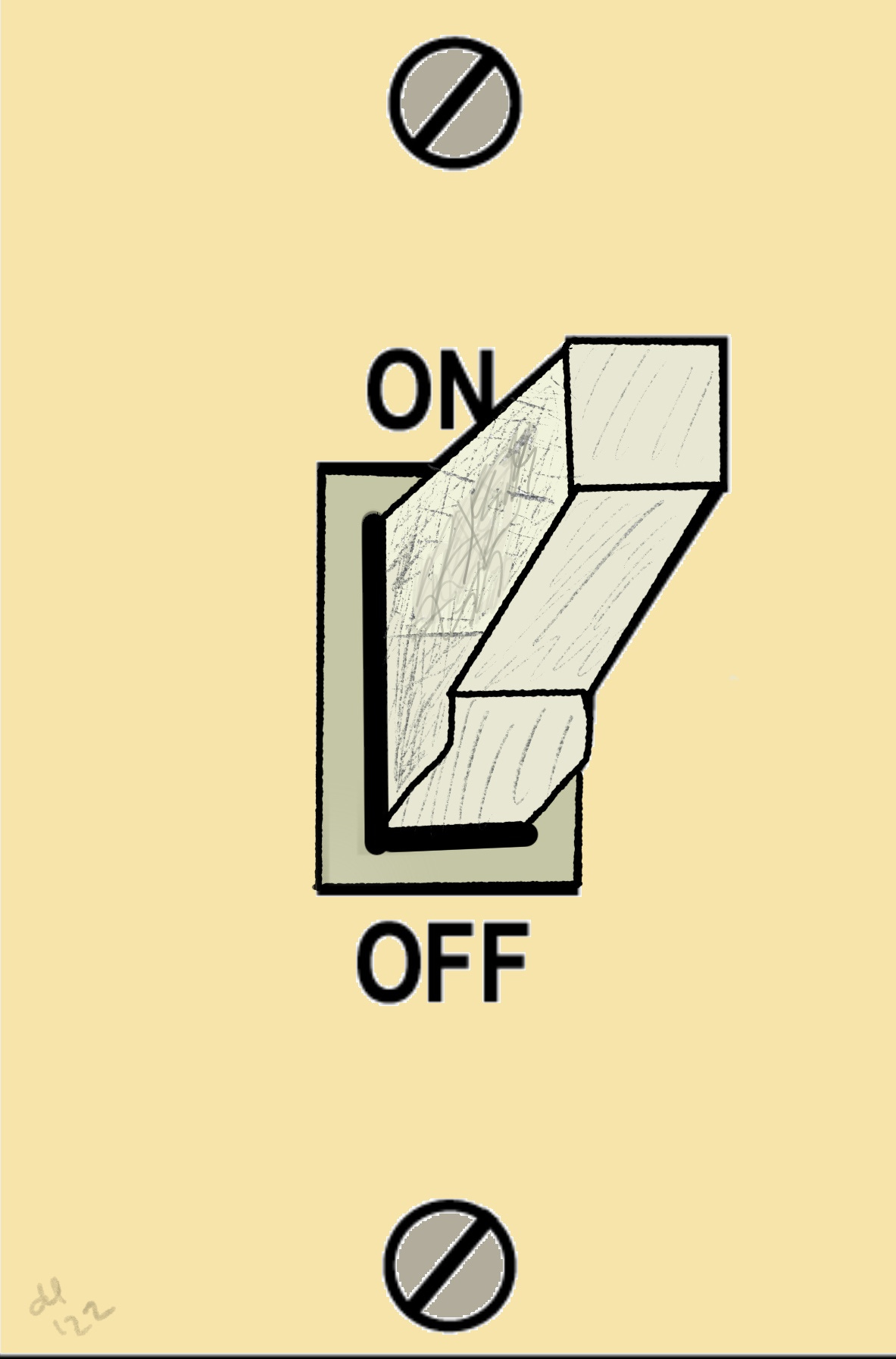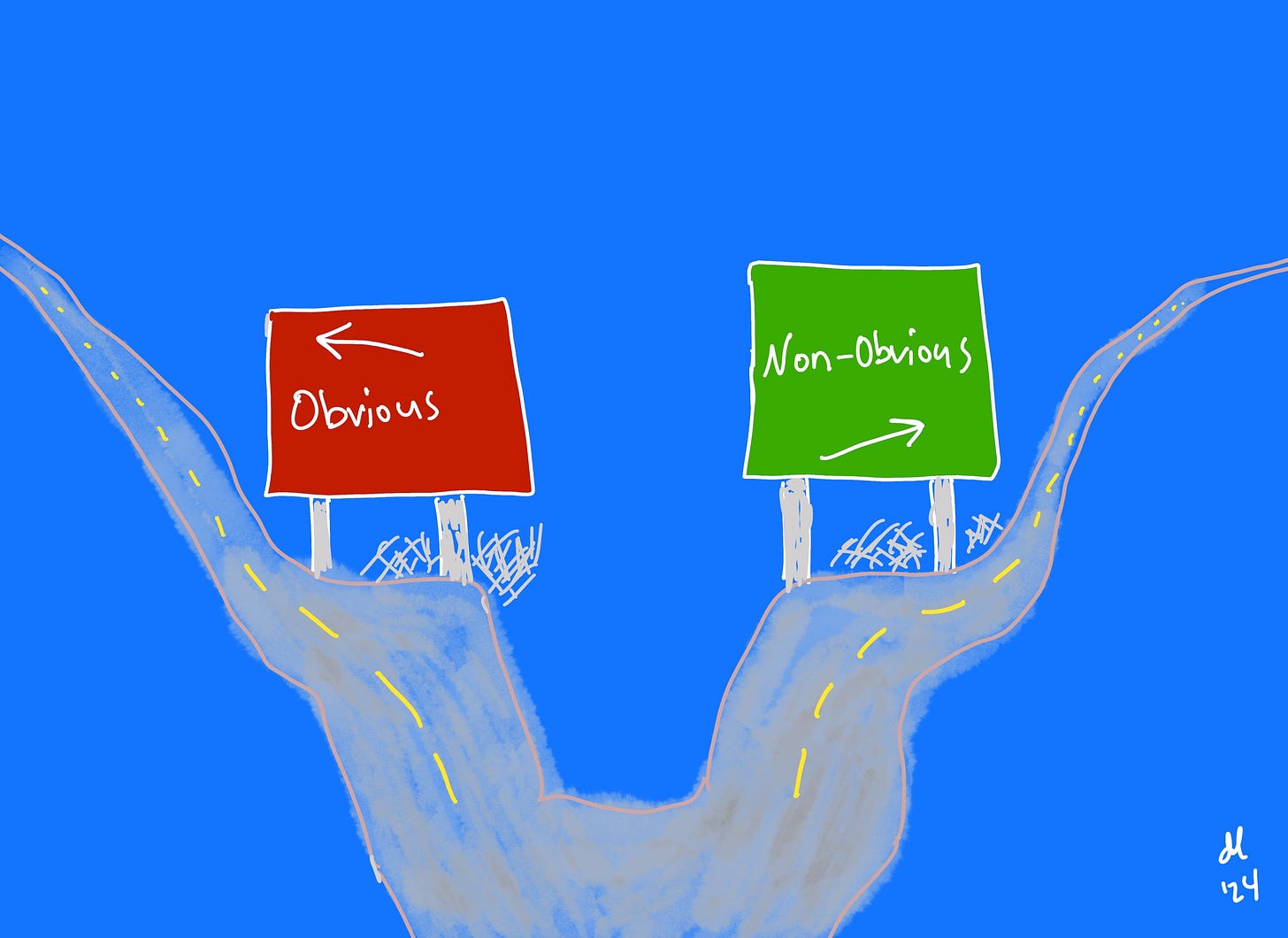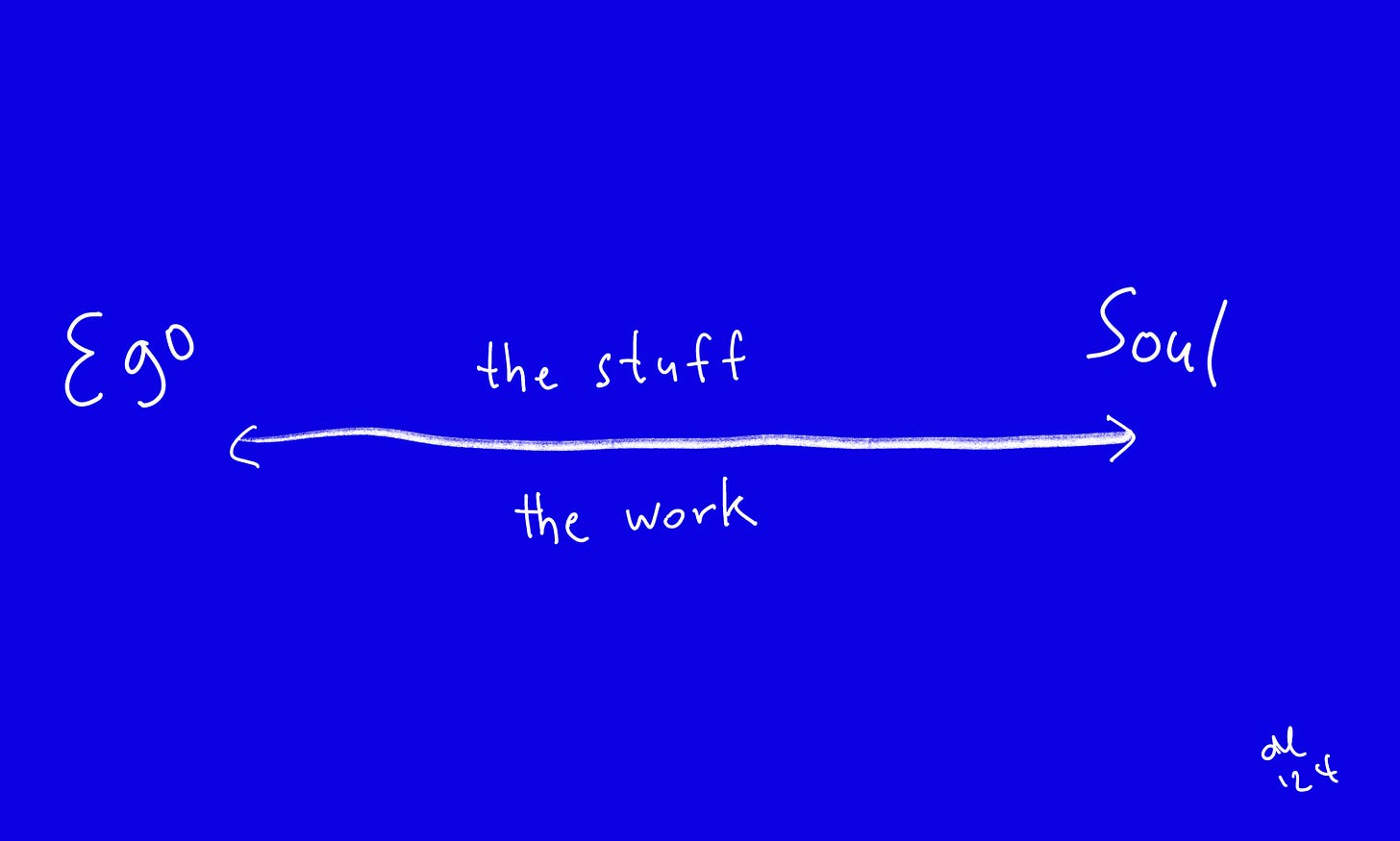How to Build a Voice Lab and Creative Ecosystem for Non-Obvious Thinking
The Soulpreneur Series Free Issue No. 28
Most advice for creatives and creators sounds good and reasonable—until it traps you:
“Be consistent”
“Find your niche”
“Stick to what works”
On the surface, it’s harmless—even a little helpful in the early days.
But dig deeper, and it’s the same recycled shit keeping many aspiring (and even seasoned) Creative-types stuck, chasing trends, blending in, and then burning out.
Consider for a moment:
What happens when the niche you’ve tucked into becomes a creative straitjacket?
What happens when “consistency” turns into a treadmill of uninspired output?
What happens when the algorithms change (or platform)—and suddenly, “what worked” — doesn’t anymore?
For example, I’ve seen no shortage of posts and articles from people flipping out about recent changes on Medium. (Most of it wasted time and energy)
Two Years of Box Cutter Co.
This month marks two years since I launched Box Cutter Co.
It didn’t begin as a polished product (and still isn’t). It wasn’t a system—just an idea, half-formed, on a platform I’d never used (e.g. Substack).
There was no neatly defined ‘niche’ (also part of the reason for the name).
No proclamations. No cookie-cutter plans. Just an experiment. An exploration of “What if…?”
And openly sharing what I was doing after walking away from a decade-plus career and leaving a stable salary in the corporate public sector.
Two years later, with about 170 posts and articles and countless Substack Notes, Box Cutter Co. has become more of a system within a larger ecosystem-like approach to building a creative enterprise.
A Creative Voice Lab—where I test ideas by sharing them. Where I “think out loud.” Where I challenge some common myths and fallacies circulating in The Creator Economy.
As
says: “Show your work.”Box Cutter Co. is that and is also a public “Learning Journal.”
The “Obvious” versus “Non-Obvious” Paths
Early on, as I was starting to post regularly online and think about how I wanted to use my new role as CEO of my own time and energy — I came across
(the only Substack I have a paid subscription to)They published an excellent book in July 2022 (three months after I had walked cold turkey from the world of offices, cubicles and toxic workplaces).
Snow Leopard. How Legendary Writers Create A Category Of One
(by Pirates Christopher Lochhead, Eddie Yoon, and Nicolas Cole).
On their website and page marketing the book, there’s a great quote from the book: 👇
The distinction between those two questions, which they explain in the book, is if you want to be accepted, produce, publish, and post Obvious content.
But, if you want to make a difference — produce, publish and post Non-obvious content.
When I walked from employment, my goals were clear — and still are — to switch from “making a living” to appreciating and being a “living in the making.”
As they say in the book:
Which game do you want to play?
• The “actionable” game?
• Or the “thinking” game?
I’ve chosen to play the “thinking game” — as this is much more in line with a “living in the making.”
What’s the difference between “Obvious” and “Non-Obvious”?
Obvious content gives people what they already know they want.
It’s actionable, linear, and safe. It’s the Amazon-like ease of ordering and receiving. It’s convenient. Easy to ‘like’ and ‘re-share.’ We’ve all seen it and see it regularly:
“10 Ways to Boost Your Productivity Today.”
“Work smarter, not harder.”
“Consistency is key.”
It’s not that Obvious content is bad—it serves a purpose. It’s clear, quick, and consumable — like fast food.
But it rarely challenges assumptions, sparks deeper thought, or builds lasting resonance or longevity.
Non-Obvious content, however, challenges assumptions. It asks “why?” — often repeatedly.
It explores ideas that may not have clear answers (or any answer for that fact) and connects unexpected dots. Yet so much of the advice aspiring (and established) Creators are sold promises speed:
“Write for algorithms”
(turning your creativity into a commodity designed to please a machine)“Repurpose everything”
(stripping the soul from your ideas in the name of efficiency)“Post consistently, no matter what”
(ignoring the importance of saying something worth hearing)
This kind of advice might make sense and feel productive initially, but it traps creators in cycles of diminishing returns—chasing visibility and shallow engagements (at the expense of meaning)
If you feel a pull to create something different—something lasting and standing out—it may be time to step beyond the many ‘obvious’ myths. Forget playing the usual game — and mimicking some popular Creator because they got 1,034 ‘likes’ on a post and 15,346 Impressions.
Consider building your own systems to expand your learning, sharpen your thinking, spark creativity, and sustain energy and soul investment.
For me, early on, a fundamental mindset shift was seeing social media (including Substack and Medium) as sandboxes to play in. And using them as Research & Development arenas — my Creative Voice Lab as part of a larger ecosystem approach.
Building A Creative Voice Lab
Two years of publishing Box Cutter Co. has taught me this: systems that last aren’t about following trends or playing the algorithm’s game.
They’re about creating spaces—like a Voice Lab—where ideas can be posted and shared with others. Many ideas have taken various shape-shifting forms.
It's no different from R&D departments or labs. Lots of ideas and experiments remain just that… ideas and experiments. They don’t go much further.
However, others continue to grow, evolve, and expand into bigger, more connected ideas and opportunities.
A Creative Voice Lab isn’t about producing for the sake of output or to satisfy algorithms — it’s about curiosity. Reflection. Experimentation.
For me, it’s a space where:
I question Obvious posts and Obvious answers and sometimes sit with the discomfort and uncertainty of not knowing.
I post and publish even when ideas are still messy or incomplete.
I connect unexpected dots, exploring intersections others may not have considered or seen (maybe not Obvious enough)
Platforms like Substack, LinkedIn, X, and Medium are extensions of my Voice Lab. They are tools for testing ideas in public, seeing what resonates, and refining my thinking in real-time.
Every post is an experiment. Every article is testing — a sample. Every interaction is a chance to learn something new.
I watch the data — like any experimenter — but try and stay unattached to the outcome. Getting attached to the outcomes of every post, article or Substack issue — after more than 2 years of posting — wastes time and energy.
I compose… then post!
(Let it go, let it fly, observe what happens, move on to the next one).
This is especially important if you play in the realm of the Non-obvious.
Why the Non-Obvious Matters
One of the biggest lessons I’ve learned over the past two and a half years is that most so-called “overnight success stories” in the Creator Economy aren’t overnight (not even close).
It’s easy to look at someone’s current success and assume they got there quickly. But behind the scenes?
The most successful creators I’ve studied—and connected with—have stories of years spent experimenting, trying things, failing, and learning.
It’s years of trying, experimenting, refining systems, finding their voice, and building something meaningful piece by piece. Probably more importantly? - all the learning and unlearning occurring along the way.
The easy path—creating Obvious content—may feel satisfying in the moment. It generates likes, clicks, and shares. But it’s often forgotten as quickly as it’s consumed.
Non-obvious content is more challenging. It asks more of you—and of any prospective audience. Non-obvious content is ‘thinking’ — and not everyone on social media or online scrolling — wants to “Think” or “Reflect”.
Sometimes, we just want silly kitten or puppy videos (and that’s OK).
But, the Non-Obvious is where meaning lives. It’s where curiosity sets off sparks, where questions linger, and where resonance builds over time into a raging inferno.
The Long Game
In these two years of building Box Cutter Co., I’ve learned meaningful systems take time to build.
No, this isn’t another bullshit Obvious: “This is a marathon, not a sprint” post. Because, in my experience, both are required.
Top marathoners more-or-less sprint at sustained speeds over a distance of 42 km (26 miles). They also have sprinting in their training regiments.
Whether you’re writing, designing, or building a creative business, there’s no shortcut to depth and meaning. For me, it’s been a process of questioning, experimenting, and evolving.
Plus, depth and meaning shift as we age and change. Contexts change… as do our values, principles, and things we care about.
I’ve found you don’t need to “find your niche” (certainly not in the early days) or “post at the right time.”
You don’t need a “content calendar” or productivity apps or fret about procrastination.
Instead, experiment and explore finding and building an ecosystem—including playing with and creating your own Voice Lab—and then committing to it. (A lab is intended for experimenting and trying shit).
“Commit to it” means trying, posting, experimenting, playing, thinking, and iterating.
The best Creators often do not chase trends—they build something sustainable, strong, and lasting. Getting there usually involves years of experimenting, changing direction, and creating other things.
Building a Voice Lab That Lasts
Non-Obvious content generally doesn’t come from chasing trends or following advice like “post consistently” or “find your niche.”
It emerges from systems—spaces where ideas can collide, integrate, evolve, and thrive.
A Voice Lab is where this can begin. It’s not about output or algorithms — granted, these are part of the strategies and outcomes. It’s about exploration. A place to:
Test ideas that feel messy or risky.
Question what feels too easy, too Obvious.
Connect dots no one else is seeing or trying.
But ideas can’t live in isolation. An R&D team or a creative lab still needs somewhere for ideas to move outside the walls — they need ecosystems to grow and scale.
Platforms where experiments can breathe (e.g., LinkedIn, Substack, X, Medium).
Formats where ideas evolve (e.g., short posts into essays, essays into systems).
Patterns connecting ideas and thinking into something deeper and lasting.
Here’s a rough sketch of my creative ecosystem.
Sometimes, I start with short form on X (Twitter), then expand to LinkedIn and then to Medium (or Substack).
Other times, I go in the complete reverse direction. I also cross-pollinate across all these platforms. This isn’t content creation. It’s idea experiment and design.
Tangible Steps to Start
What works for me may not be your cup of tea (or coffee or whiskey). Or, as I’ve done, there may be a couple of aspects of my voice lab and creative ecosystem that you replicate — and other components you drop in the trash can.
Here are some to consider.
1. Redefine Success (Shift Mindsets)
Don’t get tunnel vision on likes and shares — these are not necessarily signs of value. Observe, but don’t evaluate yourself based on these.
Think like a lab worker, not a widget builder on an assembly line. Look for resonance—what sparks conversation or lingers in someone’s mind?
2. Create Feedback Loops
Share your work publicly and privately. Observe what resonates and what may not, but don’t get attached to outcomes.
I publish on multiple platforms because each is different with different people engaging. As shared in an issue earlier this week, I publish in different areas of the same platform (e.g. private and public LinkedIn groups).
These all result in different forms of feedback.
3. Play with Formats
Post a quick idea on LinkedIn. Expand it into a deeper, longer essay or article. Break it down into tweets and post them. Or vice versa, start long form and go shorter and shorter.
Watch how your ideas shift and grow. Watch for what you’re learning. Keep track of it. I use paper and pen Learning Journals, as well as Notes app and Notion.
I also use my posts and Substack issues as public Learning Journals (e.g. show my work)
4. Let Go of Outcomes
The Voice Lab is for testing, not obsessing about perfecting. Every post is a sample, not a conclusion. Each social media platform is a tool in the toolbox — not The Tool.
Watch and observe the data, but don’t use it to self-evaluate your worth as a creative individual.
If you obsess about ‘monetizing’ or how to make a buck — especially in the early days — this will lead to frustration, fizzle and burnout. (I’ve seen it hundreds and hundreds of times in two years alone).
Create, publish, post and move forward to the next.
Systems and Play (Beat Speed)
Non-Obvious content isn’t about quick wins. It’s about systems evolving with you—spaces to experiment, connect ideas, and let them evolve.
A Voice Lab is a place to test and play with ideas. A Creative Ecosystem is where ideas collide, compound, and shift thinking (it’s also where a lot of learning can occur)
The creators who last aren’t chasing trends. They’re designing systems of thought and growing with them.
What are you experimenting with today?
That’s it for this issue. Thank you to those who have become paid subscribers. You are vital in supporting this work with some energy exchange.
If you are not a paid subscriber, please consider becoming one. The next issue of Box Cutter Co. will be out shortly.
Happy Holidays!









